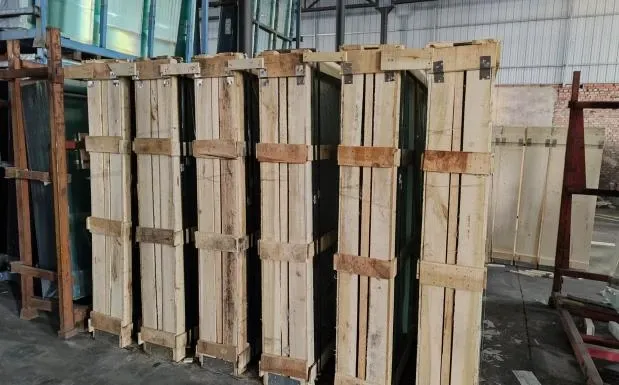10 月 . 15, 2024 08:48 Back to list
Translucent Float Glass for Enhanced Clarity and Light Transmission in Architecture
Clear Float Glass A Versatile Building Material
Clear float glass, one of the most widely used materials in the construction and architecture industries, has transformed the way we design and experience spaces. This remarkable glass type, which undergoes a meticulous manufacturing process, combines clarity, strength, and aesthetic appeal, making it an essential component in everything from residential windows to commercial facades.
The Manufacturing Process
The journey of clear float glass begins with high-quality silica sand, along with soda ash and limestone, which are mixed together and heated to a molten state at extreme temperatures. This molten glass is then poured onto a flat surface of molten tin, creating a smooth, even layer through a process known as the float glass process. The result is a sheet of glass that is exceptionally flat and transparent. After cooling, the glass is cut into desired sizes and can undergo further treatments, such as annealing or coating, to enhance its properties.
Properties and Characteristics
One of the most significant attributes of clear float glass is its optical clarity. Unlike other glass types that may have a greenish tint or imperfections, clear float glass allows for maximum light transmission. This property is essential in applications where visibility is crucial, such as in storefronts, museums, and residential buildings. The glass's transparency allows natural light to flood interiors, reducing the need for artificial lighting and promoting energy efficiency.
In addition to its clarity, clear float glass boasts impressive strength and durability. Its ability to withstand environmental changes, including temperature fluctuations and moisture, makes it a reliable choice for various applications. Furthermore, the glass can be thermally treated to enhance its strength, creating tempered glass that is resistant to impact and thermal stress. This makes it particularly useful in high-traffic areas, shower enclosures, and even glass doors and partitions.
Applications in Architecture and Design
clear float glass

The versatility of clear float glass is evident in its wide range of applications
. In modern architecture, it is commonly used for windows, curtain walls, and glass roofs. The use of extensive glass surfaces not only adds aesthetic value but also creates a seamless connection between the interior and exterior environments. This blurring of boundaries allows for a more immersive experience for occupants and enhances the overall ambiance of a space.In residential settings, clear float glass is a popular choice for creating large windows and sliding doors that invite natural light into living areas. This design approach not only enhances the visual appeal of homes but also contributes to energy efficiency. Properly utilized, clear float glass can optimize passive solar heating, helping to reduce heating costs and improve overall comfort.
Safety and Environmental Considerations
While clear float glass is celebrated for its aesthetic and functional qualities, safety considerations are paramount in its application. In many cases, laminated or tempered glass is used to improve safety, particularly in areas where the risk of breakage is higher. Laminated glass includes a layer of plastic between two sheets of glass, which holds the pieces together in the event of breakage, reducing the risk of injury.
From an environmental standpoint, the production and recycling of clear float glass present significant advantages. The raw materials used for manufacturing are abundant and recyclable, reducing the environmental footprint of glass production. Additionally, glass can be endlessly recycled without losing quality, making it a sustainable option for builders and architects committed to environmentally friendly practices.
Conclusion
Clear float glass stands out as a key material in contemporary architecture, bridging the gap between functionality and elegance. Its superior optical clarity, strength, and versatility make it the perfect choice for a myriad of applications, whether in residential, commercial, or industrial settings. As technological advancements continue to enhance its properties and sustainability, clear float glass will undoubtedly remain a cornerstone in the world of construction and design, helping to create brighter, more inviting spaces for generations to come.
-
Wired Glass: A Strong and Secure Glass Solution for Various Applications
NewsNov.04,2024
-
Tinted Glass: A Stylish and Functional Choice for Modern Homes
NewsNov.04,2024
-
The Elegance and Versatility of Silver Mirrors
NewsNov.04,2024
-
The Advantages of Copper Free Mirrors
NewsNov.04,2024
-
Tempered Glass: A Reliable Choice for Modern Applications
NewsNov.04,2024
-
Pattern Glass: Stylish and Functional Glass for Modern Design
NewsNov.04,2024
Related PRODUCTS














